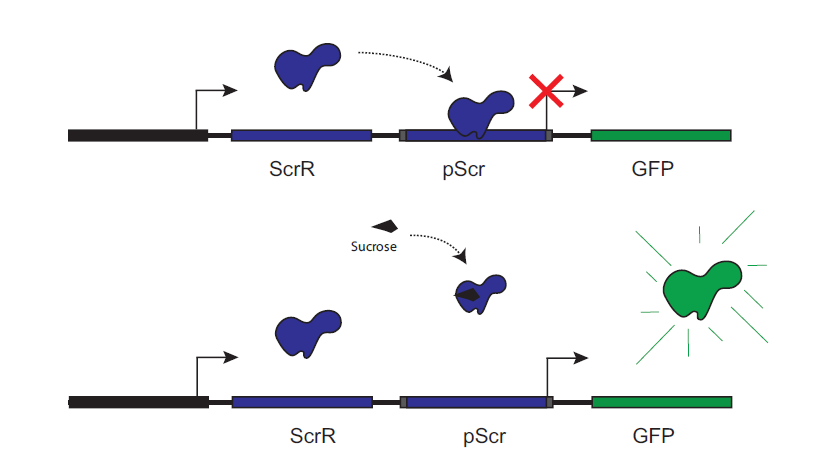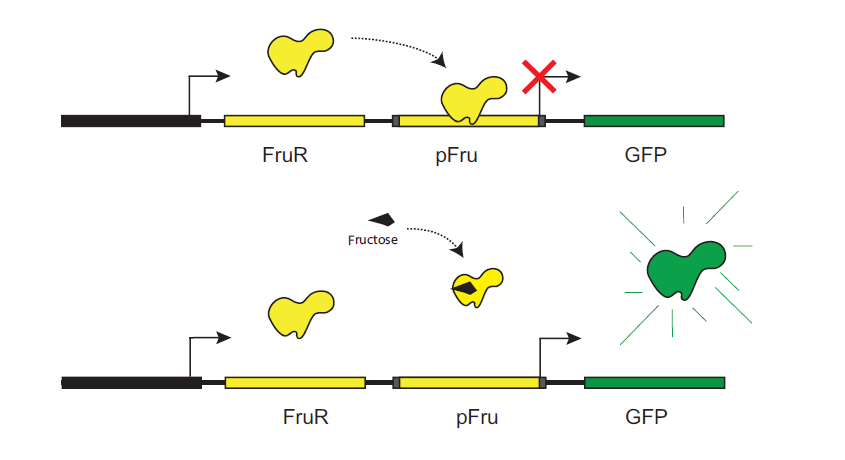Team:UT Dallas/Project
From 2013.igem.org
Streptococcus mutans has been determined to be the primary contributor to dental plaque and in the formation of dental cavities. S. mutans is able to do this by converting sucrose into lactic acid, contributing to plaque formation. Their capability to rapidly ferment lactic acid under low pH levels helps create cavities in conjunction with adherence to the biofilm. In the oral cavity, biofilms cover a majority of the surfaces. Dextran is the polysaccharide matrix that anchors the bacteria together to create the optimal platform for creation of the biofilm. In order to create the most effective tooth-decay prevention device, we engineered new biobricks to exploit these characteristics of cavity formation due to S. mutans.
- Sugar Sensor
- Com Sensor
- Dex and NspC
- Results
- Judging Criteria
How They Work: Sucrose is a disaccharide composed of glucose and fructose. The sucrose is converted to lactic acid by S.Mutans which leads to plaque formation and tooth decay. We used operon repressors for both sucrose and fructose to detect the concentrations of both of them. By using the repressor systems, we can detect the formation of plaque and prevent the formation of cavities. We have chosen two repressors for use in this project: FruR, CscR. The FruR gene encodes a protein which normally binds to and represses the fructose operon. When fructose is present in the system, it binds to the FruR protein and prevents it from repressing the operon promoter. CscR works in the similar way, but it will bind to sucrose.
What We Did: We isolated and tested these repressors, FruR and CscR, and their corresponding operons.
What We Did: We isolated and tested these repressors, FruR and CscR, and their corresponding operons.

|

|
 "
"